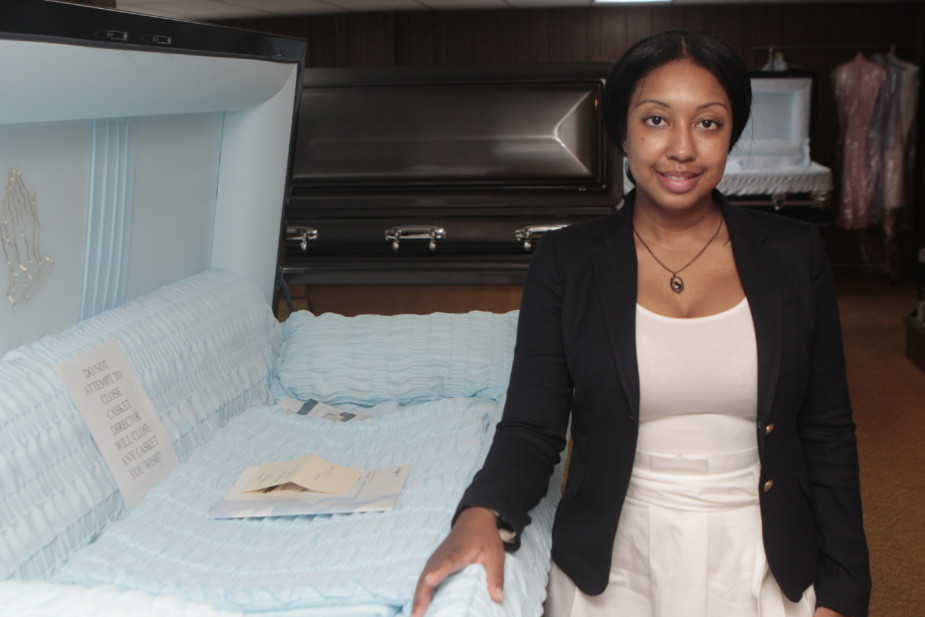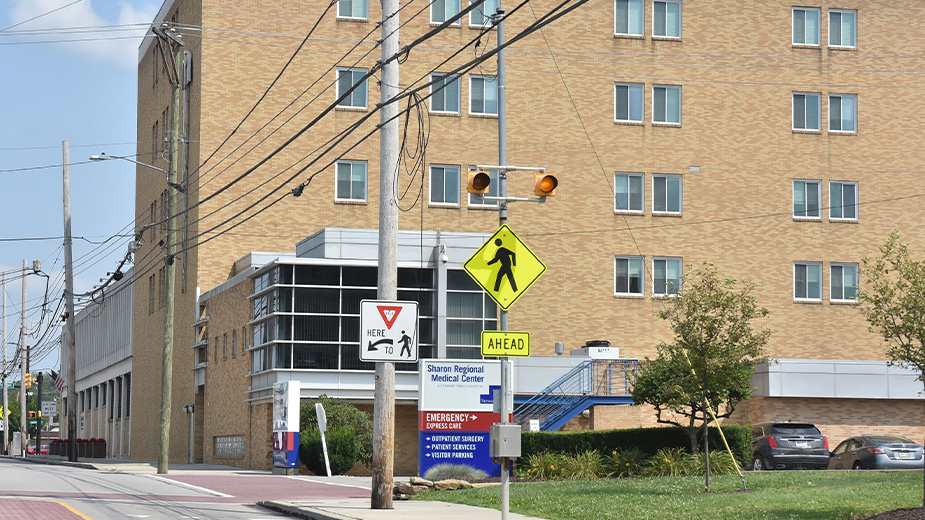Planning for Life’s Final Event Requires Discussion
YOUNGSTOWN, Ohio – Death remains the topic no one is eager to discuss, much less plan for, as evidenced by the euphemisms that lawyers, physicians, hospice directors and funeral directors use. The irony of calling death a “life event,” no doubt the last one, cannot be escaped.
Planning for the end of life affects family, finances and peace of mind. Understanding what’s involved with planning for one’s last days and for one’s death – legal and medical – should involve considerable thought, experts say.
Offering insights based on their experiences are attorney Thom Lodge, Lisa Solley of the District XI Area Agency on Aging, a licensed funeral director, Shaiyla Hakeem, and Medford Mashborn M.D., chief medical director of palliative medicine at Mercy Health and Hospice of the Valley.
When preparing for the legal aspects of planning for the end of life, three documents are critical, says Lodge, partner in Roth, Blair, Roberts, Strasfeld & Lodge LPA, Youngstown. “Power of attorney, health care power of attorney and a living will – those are the essential legal documents,” Lodge says.
Misconceptions abound about health care power of attorney, which designates an individual to make health care decisions for someone should he become incapacitated. “They’ll make a decision for you when you can’t, so people shouldn’t be afraid that someone is going to make a decision that they don’t want,” Lodge says, “because they still have control.”
The Ohio State Medical Association and the Ohio State Bar Association fine tune the state’s health care power off attorney every four to five years, Lodge says. The last major change was the addition of the HIPAA privacy authorization, allowing the disclosure of confidential medical information to specified individuals without the need for an examination by a physician.
“Until that time, the health care power of attorney could get that information, but there had to be an examination of the individual,” Lodge says. “Now you can just fax the form in and you’re good.”
 Thom Lodge recommends an escrow letter detailing when power of attorney triggers.
Thom Lodge recommends an escrow letter detailing when power of attorney triggers.
The health care power of attorney is a springing power of attorney because it “springs” into being – takes effect – when a doctor examines the affected patient and finds him incapable of acting in his own interests, Lodge says. The lawyer rarely writes springing financial power of attorney documents for clients because not every state recognizes them.
“My financial powers of attorney, the ones I recommend to clients, don’t spring that way, so they are good at all times,” Lodge says. For those who do want such a power of attorney, Lodge will write an escrow letter that states the conditions that turn power of attorney to the designated agent.
Lodge’s firm charges a fixed fee, usually between $550 and $600, which includes powers of attorney, health care powers of attorney and a living will for a married couple.
Lisa Solley, communications director of the Area Agency on Aging, siimilarly emphasizes the importance of preparing one’s family and getting one’s affairs in order. “You need to have a living will or advanced directives,” she says, “so that people know what it’s that you want.”
Solley recommends making more than one copy of a will and distributing them to doctors, children and close relatives. Without a copy of a living will, detailing advanced directives such as a do-not-resuscitate order, readily available, physicians won’t know how to proceed should a medical accident leave an individual unable to communicate that he wants no heroic measures employed. “They need to have it,” she says, “otherwise they’re going to save you – that’s their job.”
A will, deeds, titles to cars and other important documents should be kept in one place, Solley says, and the person designated should know where. However, she urges caution when using a safe deposit box, especially to guard a copy of a will.
“Have someone else on it – a child, who is your designee – because the minute you die, the bank seals it,” she says.
A designee should be listed on his checking account and be able to write checks for bills. “If not, you’re stuck. And the money is [frozen] in the account,” Solley says. “You have to be thinking ahead about this or else you could be in trouble later.”
Solley and Lodge both recommend making a list of common things that a designee, a child or close relative, will need when one dies. This ranges from the passwords to personal computers to the combination for a gym locker.
All should be listed in a letter of instruction, which an attorney can help prepare.
“It’s hard to make decisions in a crisis,” Solley says. “If you make plans ahead of time, you’ll be better off.”
For those facing the last months of their lives or suffering from chronic illnesses, hospice care and palliative medicine can do much to increase comfort and alleviate suffering, Mashborn says. But when he trained to be a physician two decades ago, Mashborn received a total of one afternoon of instruction on hospice and nothing about palliative medicine.
“Physicians my age, some older and some a little younger, they don’t know the difference between the two,” Mashborn says. “They barely know what hospice is, let alone what palliative medicine is.”
 Hospice of the Valley’s Liz McGarry, Richard Crish, Terry Kilbury and Medford Mashborn say they typically see patients for a few weeks. Medicare covers six months of care.
Hospice of the Valley’s Liz McGarry, Richard Crish, Terry Kilbury and Medford Mashborn say they typically see patients for a few weeks. Medicare covers six months of care.
Hospice, an entitlement benefit Medicare and Medicaid provide, is usually covered through most private insurance plans. It provides care for patients in their final months, often at home, in a nursing home, hospital or hospice such as Hospice House in North Lima.
Patients with a prognosis of six months or less to live can benefit greatly, but many physicians, especially those uncomfortable discussing the subject, wait too long to get patients involved.
“We often times only get to see patients for days or weeks in hospice,” Mashborn says, “whereas they can benefit for six months.”
Unlike hospice, those diagnosed with a chronic illness or undergoing cancer treatment can benefit from palliative medicine without a prognosis of no more than six months to live. There’s also pediatric palliative medicine.
When talking about palliative medicine, Mashborn speaks directly to patients and their families that they have options in the choice of treatment.
“They don’t realize that they’re in control of what they want and don’t want,” he says. “And that’s what we do in palliative medicine. Long before they have to face those choices, we give them options.”
While planning for the end of life, it’s also important to consider the choices and costs in arranging the funeral, says Hakeem, also an embalmer at L.E. Black, Phillips and Holden Funeral Home in Youngstown. “First of all, they need to think about what type of service they want to have,” she says, “whether they want burial or cremation.”
While uncommon, bodies can be embalmed for an open casket service and later cremated. Services are usually held in a church or the funeral home, but clients have other options at L.E. Black, Hakeem says. “If a person is cremated and wants a memorial service somewhere nontraditional,” she explains. “If they enjoyed nature and wanted at a service at Mill Creek Park, we could do that too.”
Once that’s decided, several things can be done in planning for a funeral, she says. Cemetery plots and headstones can be purchased well before they’re needed. However, opening and closing costs – fees charged for digging and filling a grave, along with associated services – can’t be paid in advance.
“You can do a preplanned or pre-funded funeral where you sit down with the funeral director and you plan out everything,” Hakeem says, which includes deciding the type of casket, the service itself and whether there’ll be a viewing. Funeral payments can be placed in escrow until needed.
By law, every funeral home is required to have a general price list that itemizes goods and services. At L.E. Black, direct cremations run from $800 to $1,5000. Fees for a traditional burial are higher.
“A one-day service, including a limousine here at the funeral home, would be $3,325,” Hakeem says, “and that would include the hearse, the embalming, picking up the body from the place of death, the hearse to the cemetery – but it does not include casket, vault flowers and program.”
Pictured at top: L.E. Black’s Shaiyla Hakeem says families have more options than ever for funerals.
Copyright 2024 The Business Journal, Youngstown, Ohio.



